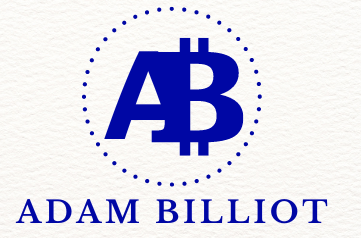In cryptocurrencies, Bitcoin stands as a pioneering and transformative force. At the heart of this revolutionary digital currency lies the process of Bitcoin mining. But what is Bitcoin mining, and how does it work? Let’s embark on a journey of discovery to uncover the inner workings of this intriguing phenomenon, unravelling its complexities and finding its impact on the modern financial landscape.
Table of Contents
What is Bitcoin Mining and How Does It Work?
Bitcoin mining is the backbone of the Bitcoin network, ensuring its security, transparency, and efficiency. As well as facilitating the verification and recording of transactions on the blockchain, it creates new bitcoins and adds them to circulation. Miners play a crucial role in maintaining the decentralized nature of Bitcoin and validating the legitimacy of transactions.
The process commences with miners competing to solve intricate mathematical puzzles using powerful computers. These puzzles validate and bundle transactions into blocks. When miners successfully solve a mystery, they append a new block of transactions to the blockchain. This accomplishment is rewarded with freshly minted bitcoins and transaction fees from the included transactions.
The Role of Miners
Miners, whether individuals or groups, employ powerful computers to solve complex mathematical puzzles. Their task is to verify and bundle a set of transactions into a block, which is then added to the blockchain. In return for their efforts, miners receive newly minted Bitcoins. This process not only facilitates transactions but also introduces new bitcoins into circulation.
Blockchain Technology and Its Significance
Central to Bitcoin mining is the blockchain, a distributed and immutable ledger. Each block contains a set of transactions, and once a block is added to the blockchain, it becomes permanent and cannot be altered. This technology ensures the transparency and security of transactions, making it virtually impossible for malicious actors to manipulate the system.
The Proof-of-Work Algorithm
At the core of Bitcoin mining is the proof-of-work algorithm. Miners compete to solve complex mathematical puzzles, and the first one to solve it gets the opportunity to add the next block to the blockchain. This process requires substantial computational power, making controlling the network difficult for any single entity. Thus, the decentralized nature of Bitcoin is maintained, and its security is upheld.
The Mechanics of Bitcoin Mining: A Step-by-Step Guide
- Transaction Verification: Miners collect and verify pending transactions from the Bitcoin network.
- Creating the Block: Verified transactions are grouped into a block, forming a candidate block for the blockchain.
- Proof of Work: Miners compete to solve a cryptographic puzzle, requiring significant computational power.
- Adding to the Blockchain: The first miner to solve the puzzle broadcasts the solution, and other miners verify its correctness.
- Consensus Achievement: Once verified, the new block is added to the blockchain, and miners reach a consensus on the transaction’s legitimacy.
- Reward Distribution: The successful miner receives a reward of newly minted bitcoins and transaction fees.
Advantages of Bitcoin Mining
Bitcoin mining offers several advantages that have contributed to its widespread adoption and success:
- Decentralization: The decentralized nature of mining prevents central control, enhancing security and trust.
- Incentive Mechanism: Miners are incentivized to uphold the network’s integrity through rewards, ensuring its continued operation.
- Transparency: The public nature of the blockchain allows anyone to verify transactions, enhancing clarity.
- Global Accessibility: Mining can be conducted by anyone with suitable hardware and an internet connection, democratizing access.
- Financial Inclusion: Bitcoin provides an alternative financial system, enabling participation for those without traditional banking services.
Overcoming Challenges and Ensuring Sustainability
While Bitcoin mining offers numerous benefits, it faces challenges like energy consumption and environmental impact. The energy-intensive process has led to discussions about its carbon footprint and sustainability. However, innovative solutions, such as renewable energy sources and improved mining technologies, are being explored to address these concerns and ensure a more eco-friendly future for Bitcoin mining.
Also Read this Blog: Bitcoin Pros and Cons: Should I Buy Bitcoin In 2023?

Conclusion: Shaping the Future of Finance
In the ever-evolving landscape of digital currencies, Bitcoin mining stands as a pillar of innovation, decentralization, and financial empowerment. Its intricate process, driven by cutting-edge technology and the collective efforts of miners worldwide, ensures the secure and transparent functioning of the Bitcoin network. As we continue to witness advancements in mining techniques and sustainability measures, Bitcoin’s influence on the global economy is set to expand, ushering in a new era of financial possibilities.





 Bitcoin
Bitcoin  Ethereum
Ethereum  XRP
XRP  Tether
Tether  USDC
USDC  Lido Staked Ether
Lido Staked Ether